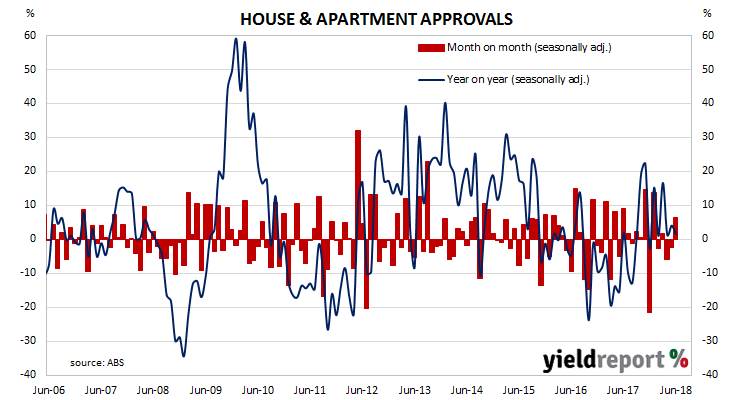Aside from engineering and architectural design, one of the earliest requirements of a building project is to obtain approval from the relevant statutory body. As a result, building approvals data is a leading economic indicator of future construction. While not all projects which have been approved are completed, all completed projects have been granted approval. Approvals data thus provides a useful indicator of future construction.
The latest building approval figures have been released by the Australian Bureau of Statistics and the month-to-month swings caused by volatile apartment numbers have continued. Total approvals increased by 6.4% in June after recording a revised growth rate of -2.5% in May, considerably higher than the median forecast of a 1% gain. On an annual basis, total approval grew by 1.6%, down from May’s comparable figure of 4.1% after revisions but more than the expected 3.5% contraction.

Despite higher yields in overnight markets, especially in Europe, local bond yields barely changed, either before the report’s release or afterwards. By the end of the day, the yield on 3 year bonds had increased by 1bp to 2.11% while 10 year bonds remained unchanged at 2.66%.
House approvals increased by +4.4% for the month, up from May’s 7.9% drop. On a 12-month basis, house approvals were just 0.9% higher. Apartment approvals are a lot more volatile (see chart below) but they increased for a second month in a row, this time by 8.9%. On a 12-month basis, apartment approvals were 2.4% higher.

